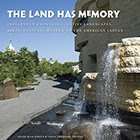The Navajo word, "hózhó" means beauty, balance, harmony, or holiness. Navajo healers are called "
Hatałii" or "
Singers" and have been taught traditional methods to restore cosmic balance. Hatałii restore balance, beauty and holiness by creating sand paintings. They may use yellow ocher, pollen, red sandstone, charcoal, white gypsum, corn meal and crushed flower petals.
Navajo sand paintings are called, "
The place where the Gods come and go". Sitting on the sand painting while the Singer chants a corresponding song helps the person in need of healing absorb power from the spirits who will absorb the illness. Once the sand painting has been used in a healing ceremony it contains the illness and must be destroyed. For some ceremonies a new sand painting is made each day for a number of days.
Like the Katsina dolls, the sand painting is sacred and can not be produced commercially as art but alternative designs with purposeful mistakes are created for sale as contemporary works of art.





















